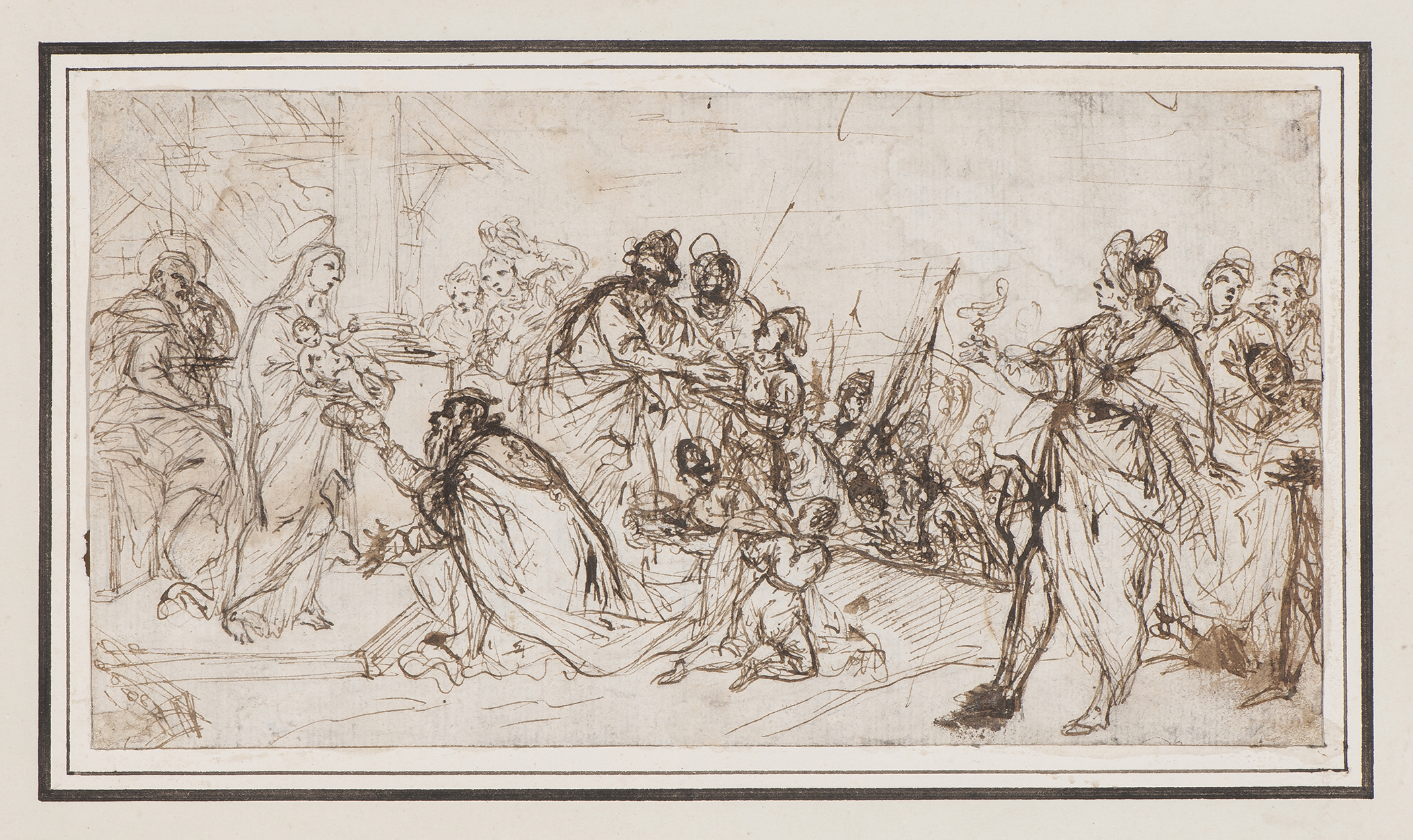Georgia Museum of Art at the University of Georgia
December 21, 2019 - March 8, 2020

When we think of Renaissance art, we usually think of paintings, but from the 16th century on Italian artists focused on drawing just as much if not more so. Giorgio Vasari, an influential Italian painter, architect and historian, regarded disegno (which means “drawing” or “design”) as the foundation of visual art. Disegno was considered the basis of an artist’s training and an essential tool for capturing nature and the beauty of life. Drawing was at the core of all workshop practices and teaching academies, used to develop an artist’s skill through the diligent copying of antiquities and masters’ works. Drawing and printmaking also became the most inventive forms of expression and experimentation.
The exhibition “Master, Pupil, Follower: 16th- to 18th-Century Italian Works on Paper,” organized by the Georgia Museum of Art at the University of Georgia and on view from December 21, 2019, through March 8, 2020, features drawings and prints from this prolific period. Artists include Giulio Benso, Giovanni Battista Tiepolo, Stefano della Bella, Giovanni Benedetto Castiglione, Salvatore Rosa and Guercino as well as followers of Veronese, Tintoretto and other prominent artists. The works come from the museum’s permanent collection and from the private collections of Giuliano Ceseri (Louisiana) and Jeffrey E. Horvitz (Massachusetts). With 28 drawings and four prints, the result is a well-rounded selection of works by artists who trained in or traveled to Italy, establishing, upholding and transmitting a long-lasting tradition of excellence in the graphic arts.
These works depict a wide variety of subjects, from landscapes to mythological and classical episodes and religious scenes. Organized by region, the exhibition and catalogue illustrate how each area of Italy — from the Veneto to Tuscany — developed its own artistic style, encouraged by a flourishing system of workshops where teachers imparted their approaches and methods to their students.
Organized by Robert Randolf Coleman, professor emeritus, Renaissance and Baroque art history, University of Notre Dame; Nelda Damiano, Pierre Daura Curator of European Art, Georgia Museum of Art; and Benedetta Spadaccini, Biblioteca Ambrosiana, Milano, the exhibition highlights varying drawing techniques and materials, such as pen, ink, chalk, gouache, charcoal, and colored paper. Coleman, Damiano and Spadaccini also collaborated on the accompanying exhibition catalogue that the museum will publish, with independent curator Sonia Couturier contributing an entry as well. The catalogue publishes many drawings for the first time, reattributing some of the works and presenting new scholarship.
Damiano adds, “The exhibition is a welcome opportunity to underscore the contribution and support of important donors and patrons of the museum, showcase wonderful examples of Italian drawing and advance scholarship.”

